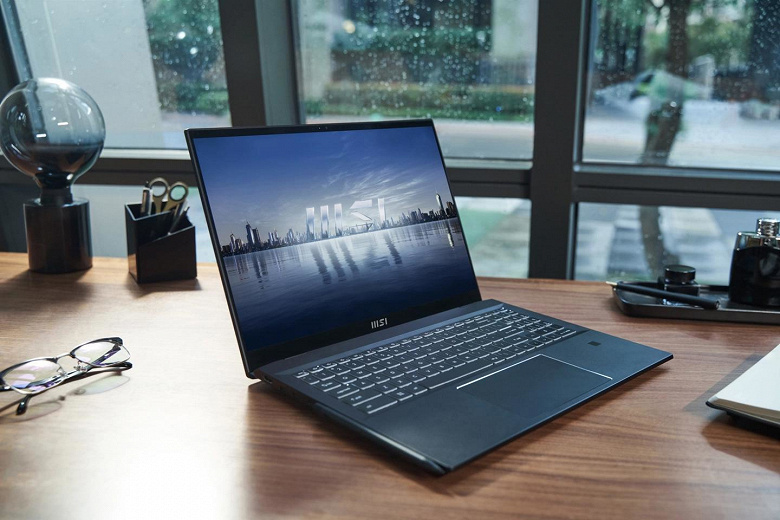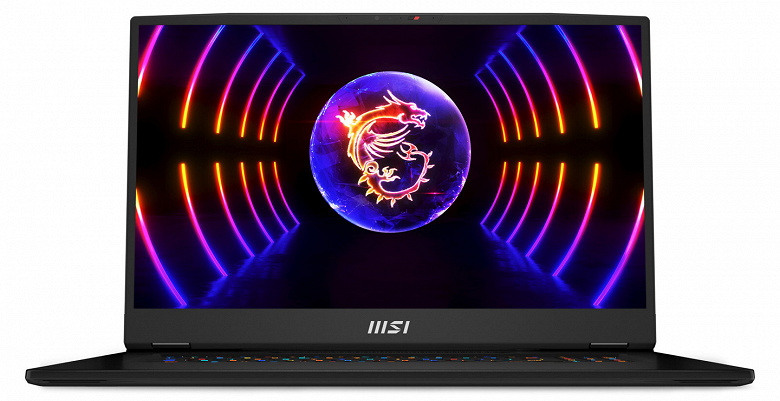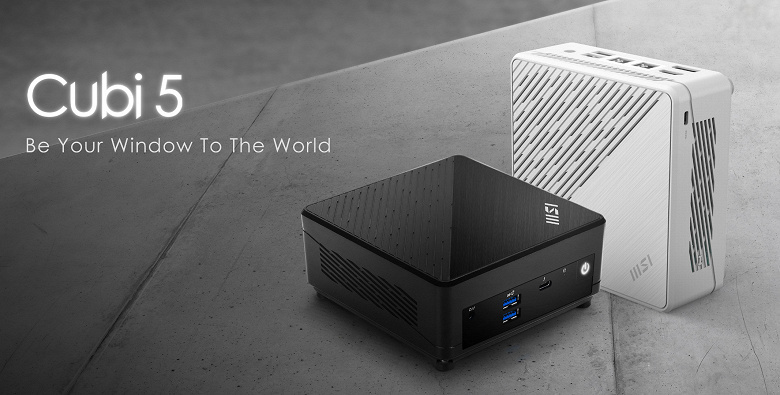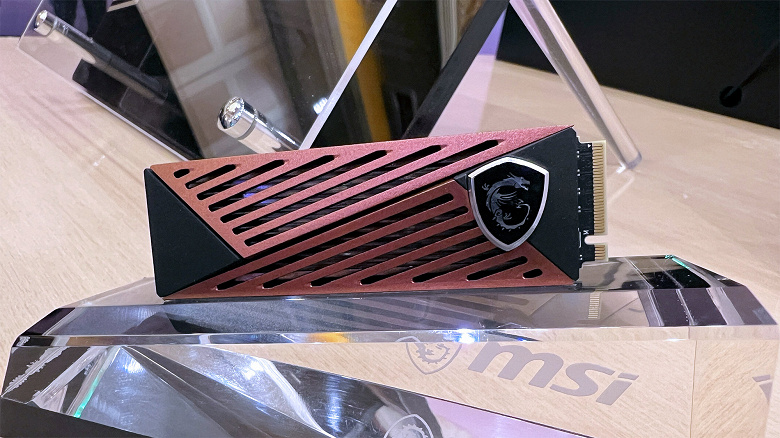If we trace how the model series of monitors of many famous manufacturers evolved, we can note that the segment of professional solutions for almost every one of them always turned out to be the last in importance. Such models are rarely bought and for a long time, they are chosen carefully and make high demands.
To make really high-quality, provide a wide list of possibilities and correctly configure complex algorithms, surpassing or at least being at the level of time-tested competitors is a difficult task, which many newcomers to the segment have repeatedly proved.
Some of them could not conquer this market, and the models left over from failed attempts serve to a greater extent as a kind of filler for the product line. According to many brands, it should cover all market segments, even if a particular solution is unable to compete with direct competitors on equal terms.
MSI does not seem to be afraid of such a development of events, and therefore, with the already familiar enthusiasm and enthusiasm, it took up the development of its professional solutions. We meet the first of them – an ultra-widescreen 5K monitor from the new Prestige series, model PS341WU.
Specifications
Preliminary information about the MSI Prestige PS341WU came to the press in mid-May 2019, and the official announcement took place at the end of the summer of that year. The appearance of new items on sale was expected in September, however, the model got into retail much later, and reached Russia quite recently. At the moment (early June 2020), it is sold at a price of $1099 to $1299, which is less than the officially indicated $ 1,299 for the US market.
Competitors have only one similar model – this is the LG 34WK95U. The monitor was introduced and put on sale much earlier, it has already gained popularity (in the absence of competitors, it is not so difficult to do this), and its availability and full support for Thunderbolt 3 make LG a very serious rival, which Apple users will pay attention to.
| MSI Prestige PS341WU | |
| Screen | |
| Diagonal inches | 34 |
| Aspect ratio | 21: 9 |
| Matrix Coverage | Semi-gloss |
| Standard resolution, pix. | 5120 × 2160 |
| PPI | 163 |
| Image Options | |
| Matrix type | Nano IPS |
| Backlight type | W-LED + KSF Phosphor |
| Max. brightness, cd / m 2 | 450 (up to 600+ in HDR mode) |
| Static contrast | 1200: 1 |
| Number of colors displayed | 1.07 billion |
| Vertical Frequency, Hz | 60 Hz |
| BtW response time, ms | Nd |
| GtG response time, ms | 8 |
| Maximum viewing angles horizontal / vertical , ° |
178/178 |
| Connectors | |
| Video inputs | 2 x HDMI 2.0; 1 x DisplayPort 1.4; 1 x USB Type-C |
| Video outputs | Nd |
| Additional ports | 3 x USB 3.2 Gen 1; 1 x Headphone-Out (3.5 mm); 1 x Mic-In (3.5 mm); 1 x Audio-Combo (3.5 mm); 1 x Cardreader (SD) |
| Built-in speakers: number × power, W | No |
| Physical parameters | |
| Screen Position Adjustment | Tilt angle, change of height, rotation |
| VESA mount: dimensions (mm) | Yes (100 × 100) |
| Kensington Lock Mount | Yes |
| Power Supply | Built in |
| Max. power consumption in work / in a waiting mode (W) |
60 / <0.50 |
| Overall dimensions (with stand), L × H × D, mm |
817 × 501 × 260 |
| dimensions (without stand) D × H × D, mm |
Nd |
| Net weight (with stand), kg | 8.2 |
| Net weight (without stand), kg | Nd |
| Estimated price | 74 000-90 000 rubles |
MSI itself does not hide the used Nano-IPS matrix (LM340RW1 – it is so alone) from LG Display, which was mentioned during the announcement of the new product.
The 34-inch panel of 21: 9 format with a resolution of 5120 by 2160 pixels provides pixel density at the level of classic 27-inch 4K solutions – 163 PPI.
Thus, the slightly confusing abbreviation 5 ”tells us not about a higher pixel density than 4K models (as would be the case when comparing with the same LG UltraFine 5K), but only about the number of these pixels across the screen, which, to In a word, it is comparable in height to a 27-inch 16: 9 format monitor and, in fact, is its version extended by a third.
The applied matrix is pseudo-10-bit (8 bits + FRC) and uses the W-LED backlight + KSF Phosphor layer, which together provides more than 1 billion colour shades and 98% coverage of the DCI-P3 colour space.
The company does not say anything about using Flicker-Free-backlighting, but for now, suppose that it is just like that, as buyers of modern monitors require. As a matter of fact, we will check during the tests.
The maximum brightness of 450 nits for the SDR mode and 600+ is declared for the matrix in case of HDR activation in a small part of the screen, thanks to the support of the VESA DisplayHDR 600 standard.
The contrast ratio is increased to 1200: 1 against the standard for IPS 1000: 1, viewing angles are usual – 178 degrees in both planes. Since the monitor is not a gaming monitor, the company limited itself to a scanning frequency of 60 Hz, and the stated GtG response time is 8 ms. None of the adaptive synchronization systems is supported.
The novelty is presented in a “frameless” design, with relatively thin internal frames and the most ergonomic stand. Among the main connection interfaces are two HDMI 2.0 (up to 3840 × 2160 at 60 Hz), one DP 1.4 and USB Type-C with support for DP Alt Mode. The latter is not Thunderbolt 3-compatible, so when connected to Apple laptops, the resolution will be reduced to the level of 3840 × 2160, which should be considered when choosing a similar model.
To work with peripherals, the PS341WU integrates three USB 3.2 Gen 1 ports (one of which supports fast charging 15 W), an SD card reader, a 3.5 mm audio output, an audio input for a microphone and a combined 4-pin headphone jack and microphone through the appropriate adapter from the delivery.
The convenience of working with the menu is provided by a 5-position joystick and two additional keys, but the built-in speaker system is not represented in the monitor.
Among the advantages noted by the manufacturer PS341WU – accurate factory calibration and support for multi-window modes PbP and PiP, and a special application for setting up Creator OSD with rich features help to make more convenient configuration bypassing the OSD menu.
Options and appearance
The monitor comes in a wide box with high-quality printing. The design is made in light colours, on the sidewalls are several photos of the model, as well as pictograms with captions indicating the key features of the model.
A plastic carrying handle – as is common with MSI – is not provided. It is proposed to use two cutouts at the ends.
On one of the main stickers, the main technical specifications are indicated, the batch number, serial number, model name and other information are presented. The manufacturer of the monitor is MSI itself, without the involvement of third-party contractors (with the exception of the LCD matrix supplier).
The MSI Prestige PS341WU monitor came to us with half the delivery kit, which should include the following items:
- power cable;
- USB Type-C cable;
- USB Type-A cable for connecting to a PC;
- HDMI cable
- DisplayPort cable
- audio cable (4-pin 3.5 mm mini-jack ↔ two 3-pin 3.5 mm plugs);
- stand mount screws and extension legs for VESA mount;
- plastic clamp cable management system;
It is immediately clear that the manufacturer was not greedy and provided a wide selection of connection options, but for some reason did not take into account the color of the cables – white would be much better in harmony with the design of the device itself. Since part of the delivery kit did not reach us, we did not get acquainted with the standard set of waste paper and, sadly, did not see the report on the factory calibration, which was lost.
The appearance of the new product is well described on the manufacturer’s website, so we quote it: “The design of the Prestige PS341WU monitor is inspired by the ideas of Western and Eastern painting. The asymmetric circle and the wavy line on the back of the monitor harmoniously combine with the perfectly symmetrical square in front – this is a real work of art! ” Here we, perhaps, will not agree only with the “real work of art”, since the hero of the review does not have any exclusive and difficultly repeatable elements, but the fact that he looks modern, stylish and fresh cannot be taken away from the PS341WU.
The manufacturer used two shades of white in combination with copper color inserts, which can be found even on both sides of the central column. A similar color scheme distinguishes the MSI monitor against the background of many displays on the market, however, it is likely to complicate the life of those who care about the harmony of the appearance of the purchased device and the interior of the apartment.
The monitor case is thick by modern standards, but, given the capabilities of the installed matrix (and the corresponding requirements for its cooling), as well as a wide list of installed interfaces, you understand why it is so.
The stand, if not much imagined, looks more like a metal frame from a window with two additional decorative elements (one of which is a paperweight, in our case, was lost), and the fastening of the central rack is shifted to its edge.
The stand is attached to the monitor through the integrated VESA-compatible mount using the four screws supplied, after which a decorative cover is installed. Unfortunately, the quick-mount system in the monitor is not provided, although we expected to see it for that kind of money.
The cable management system at the monitor consists of a cable clamp in the area with interfaces, an additional decorative cover with a notch, and a plastic holder attached to the central rack. The decision is reasonable and effective.
The ergonomics of the monitor are represented by three degrees of freedom: a height change of 100 mm is available upward, an inclination in the range from -5 to +20 degrees and a rotation of 35 degrees to the right and left. A flip to portrait mode (Pivot) is not provided, but here it is – due to the size of the screen – and nothing.
The base of the stand is entirely made of metal (without plastic pads), like all mounting mechanisms. Seven wide rubber feet are used to grip the work surface. They easily hold the monitor in one position.
The matrix used has a semi-matte surface, which is increasingly preferred by manufacturers in order to reduce the visibility of the crystalline effect, but even in this case, CE strongly depends on its grain size and can be significantly different.
By the sticker on the monitor case, we found out the date of its production (August 2019) and place (China).
The main interfaces are concentrated in the back of the device and directed down. Connecting cables in the absence of the possibility of a Pivot flip is not very convenient, so it remains to be expected that you will only need USB ports all the time.
In this case, two of them, as well as an SD reader and audio jacks are located on an additional block on the left side of the case. There are definitely no problems with the convenience of connecting.
The quality of the plastic used in the MSI Prestige PS341WU can be estimated at 4.5 points out of 5, and the quality of the fit of the elements can not be faulted at all. Light surfaces, if you do not allow a child with markers in your hands to reach your workplace, are as practical as possible: small scratches, dust and fingerprints are not visible on them.
There is no reason to criticize the quality of the painting or the processing of the edges of the elements of the body. MSI Prestige PS341WU does not lend itself to twisting, creaking or crunching with adequate physical impact and a change in position in space. The rigidity of attaching the case to the stand does not raise questions – the screen does not shake from any touch and reliably maintains the position set by the user.
Menu and controls
MSI has equipped the Prestige PS341WU with a 5-way joystick, the most convenient control ever. A copper-coloured joystick is located in the back of the case, on the right side, and the power indicator with a white glow that does not strain your eyes at all is located on the lower edge and is integrated into an additional on/off button. It is supplemented by a key with the P icon, which has a direct connection with the Creator OSD application. By default, it launches this program, but in the future, the user can independently determine its working function or put a full-fledged macro on it.
When moving the joystick to one of four possible positions, the user activates the quick access function. By default, the manufacturer chose the following: setting an alarm (timer), selecting a signal source, calling the on-screen assistant and changing the picture mode. All four functions, if desired, can be changed to others through a special tab in the main menu.
The appearance of the OSD screen of the MSI PS341WU is different from what we saw with the gaming monitors of the brand – here it is as calm in style as the monitor itself. The menu is made in light grey, with a wide range of different user tips and accessible navigation.
For the official deliveries of PS341WU to Russia, the Russian language was immediately selected, however, with a not very high-quality translation. Six main sections are presented, in the first of which the user can select a preset image mode, set a timer and select the on-screen assistant function (various grids, rulers, scales, etc.).
In the second section – “Image” – it is proposed to set the brightness, contrast and colour temperature, adjust the saturation and hue for six colour channels, set the sharpness and enhance it with contour sharpness (“Image Enhancement” function). Here you can also adjust the degree of acceleration of the matrix, distinguishable grey and gamma, activate the “Blue Filter” mode, enable local dimming and select the operating mode of the built-in screen scaler.
A special section with the corresponding name is highlighted for selecting a signal source, and immediately after it is a section for activating the PbP and PiP functions in different use cases.
A personal subsection is also provided for assigning quick access functions for the four positions of the joystick. The choice is wide, everyone will choose the most suitable option.
In the last section, “Settings”, you can select the localization language (it is better to immediately switch to English), adjust the transparency of the menu and the time until it disappears from the screen, select a sound source, activates fast charging and reset all settings to default values.
Access to the service menu was not found.
An additional control method, which we noted more than once in this material, is the MSI Creator OSD Windows application. The manufacturer integrated a wide list of possibilities into it – much wider than the OSD menu of the monitor itself provides. In addition to the full-fledged management of the PS341WU, you are offered the opportunity to create custom modes, as well as mock-ups for working with several windows of different programs and possible options for presenting PbP / PiP. You can assign a function to an additional control button, as well as quickly switch to the standard settings of the operating system (Wi-Fi, power scheme) and various accessories (mice, keyboards).
Testing methodology
The MSI Prestige PS341WU was tested with the X-Rite i1 Display Pro colorimeter in combination with the X-Rite i1 Pro reference spectrophotometer, Argyll CMS software with the dispcalGUI graphical interface and HCFR Colormeter. All operations were carried out in Windows 10, during testing, the refresh rate of the screen was 60 Hz.
In accordance with the methodology, we will measure the following monitor parameters:
- white brightness, black brightness, contrast ratio with backlight power from 0 to 100% in 10% increments;
- color gamut;
- color temperature;
- gamma curves of three primary RGB colors;
- gray gamma curve;
- color deviations DeltaE (standard CIEDE1994);
- illumination uniformity, the uniformity of color temperature (in Kelvin units and deviations DeltaE) at the center point brightness 100 cd / m 2 .
All measurements described above were performed before and after calibration. During the tests, we measure the main monitor profiles: the default, sRGB (if available) and Adobe RGB (if available). Calibration is carried out in the default profile, except in special cases, which will be discussed later. For monitors with extended color gamut, we select sRGB hardware emulation mode, if available. Before starting all tests, the monitor warms up for 3-4 hours, and all its settings are reset to factory settings.
We will also continue our old practice of publishing calibration profiles for the monitors we tested at the end of the article. At the same time, the 3DNews test lab warns that such a profile will not be able to 100% correct the shortcomings of your monitor specifically. The fact is that all monitors (even within the same model) will certainly differ from each other in small color rendering errors. It is impossible to produce two identical matrices physically, so for any serious calibration of the monitor you need a colorimeter or spectrophotometer. But the “universal” profile created for a specific instance, as a whole, can improve the situation for other devices of the same model, especially in the case of cheap displays with pronounced color rendering defects.
Operating parameters
In the MSI Prestige PS341WU monitor, the manufacturer offers ten preset factory modes and a function for reducing the blue backlight spectrum, which, in essence, repeats one of the “Professional” presets. When testing the monitor, we used the DisplayPort interface as the most popular and problem-free, as well as fully revealing its potential.
By default, the settings for the main parameters are as follows:
- Mode – user setting;
- Brightness – 75;
- Contrast – 50;
- Sharpness – 0;
- Gray Level – 10;
- Response time is short;
- Local dimming – off .;
- Color temperature – standard (6500 K);
- Gamma – 2.2.
During manual tuning (100 cd / m 2 and 6500 K) settings took the following form:
- Mode – user setting;
- Brightness – 8-9;
- Contrast – 50;
- Sharpness – 0;
- Gray Level – 10;
- Response time is short;
- Local dimming – off .;
- Color temperature – setting (100-98-92);
- Gamma – 2.2.
We lowered the brightness of the backlight, and in order to achieve the required color temperature, we had to change the gain of the color channels, but first we set them to 100% instead of the default 50% to increase the black depth and brightness of the backlight (this mistake is made by MSI engineers with each new monitor – and the first Prestige was no exception). The contrast value did not change due to the lack of a positive effect on the gamma curves, there was no reason to adjust the gamma itself or the sharpness in one or another of its manifestations.
White brightness, black brightness, contrast ratio
The verification was carried out in the “Custom” mode with the default settings.
| Menu brightness (%) | White brightness (cd / m 2 ) | Black brightness (cd / m 2 ) | Static Contrast (x: 1) |
| 100 | 494 | 0.384 | 1286 |
| 90 | 450 | 0.35 | 1286 |
| 80 | 409 | 0.318 | 1286 |
| 70 | 366 | 0.285 | 1284 |
| 60 | 326 | 0.254 | 1283 |
| fifty | 285 | 0.222 | 1284 |
| 40 | 243 | 0.189 | 1286 |
| thirty | 203 | 0.158 | 1285 |
| twenty | 156 | 0.122 | 1279 |
| 10 | 114 | 0,089 | 1281 |
| 0 | 68 |
The maximum brightness was at a level of 494 cd / m 2 , and the lower value was 68 cd / m 2 . The monitor exceeded the brightness indicated in TX for the SDR operating mode, and the lower value will please most of those who often work at a computer with a low level of ambient light.
The monitor has a slightly deeper black colour than most IPS representatives, which translates into a contrast ratio of almost 1300: 1. When activating the local backlight, it is possible to get the numbers several times higher, but since there are few separately controlled zones, it makes no sense to carry out such measurements, since in real work such a rough control of the backlight will bring more problems than the benefits and pleasure of the picture on the screen.
As for the maximum brightness in HDR mode, the MSI Prestige PS341WU we tested was able to show 665 nits in a small area of the screen, which again exceeded the figure indicated in TX.
Results at standard settings and after calibration
MSI expressly declares the use of Nano-IPS-matrix with extended colour gamut – with 98% coverage of the DCI-P3 space, which has dramatically increased its popularity over the past few years.
When testing a monitor with the manufacturer’s default settings, it is impossible to reproach – the numbers obtained are as close as possible to the declared characteristics and correspond to the level of the used LG Display matrix. After calibration, compliance decreases slightly.
The white point is tuned with a visually noticeable shift to the cold zone, but this did not affect the ideal stability of the grey colour centre shades. When manually configuring and activating a profile with LUT edits, stability is reduced.
Ideally, the monitor also has gamma curves, and calibration only worsens them. It is felt that the hands of professionals were attached to their factory settings. True, then the question arises: where were they when setting the white point?
The features of the colour gamut of the model did not determine the lowest deviations in the Argyll test when comparing it as a reference with the DCI-P3 space, but ordinary profiling is enough here. After that, the results are immediately transformed – and we get what is required for seamless work with colour.
Display P 3 Results
As one of the additional modes, the PS341WU has a Display P3 preset.
In it, the manufacturer curtailed the ability to reproduce purple and red halftones, which did not have the best effect on the correspondence to the DCI-P3 space. The result decreased by more than 5%.
With the white point in the studied mode, the problems are exactly the same as with the default settings. But at the same time, there is also no problem with the stability of gray shades.
Again, we have perfectly set gamma curves corresponding to gamma 2.2.
The change in color gamut positively affected deviations in many shades, but gave a sharp increase in red. As a result, this led to a slight increase in the average result and a much more significant increase in the maximum deviation. There can only be one conclusion here – profiling is necessary in both cases, but in Display P3 it is more important.
Results mode AdobeRGB
In the absence of full support for the AdobeRGB space, the manufacturer for some reason nevertheless added the emulation mode of this colour space to the list of available Prestige PS341WU modes.
The colour gamut in this preset is narrowed relative to Display P3, but there is no question of adding opportunities in the field of green and turquoise halftones – the matrix illumination system and the colour filters used are not capable of this.
At the same time, we continue to observe the white point at a level of about 7500 K and the same ideal colour temperature stability of shades of grey.
Once again, we are met by ideal gamma curves and the corresponding colour balance and contrast of the image on the screen.

It is not surprising that with such changes in the color gamut during emulation and the inability to conquer the AdobeRGB space at the physical level, the MSI monitor showed even lower results than in the other two studied modes. In this regard, we have only one question: for whom or why is this mode needed for the PS341WU?
SRGB Results
The most useful and, most likely, potentially most frequently used mode of the new product from MSI will be sRGB Mode – a classic for many years.
Results Mode EyeCare
In addition, we decided to check one of the three modes of reducing eye strain, which this time was EyeCare (it is also activated by turning on the “Blue Light Filter” function), which affects the blue channel to a greater extent. The brightness, in this case, is automatically lowered only to 245 cd / m 2, which is certainly a lot, but there are no difficulties with the installation of the required value.
On the grey gamma curve, there are no pronounced differences from the previously obtained results – the devil is hiding on the RGB curves. Here we have a blue S-shaped curve to increase contrast. True, it did not lead to anything other than a minimal effect on the contrast of the picture and a much stronger colour imbalance.
We did not get better shadows, reduced contrast (for less eye strain in low light conditions), and also a little brightness at the default settings – all this is not there, but there is a white point at 4800 K and average stability of grey shades. Whether such a change in the additional mode is worthwhile under the conditions of being able to adjust RGB yourself or choose a colour temperature mode of 5000 K is a big question.
Backlight uniformity
The uniformity of backlight dimming tested after the central point of the monitor to a level of 100 cd / m 2 and the colour temperature in Kelvin ~ 6500. The backlight unevenness compensation system is not used in the model under study, however, looking at the screenshots of the Creator OSD application on the manufacturer’s website, we hoped that the MSI Prestige PS341WU would be equipped with a similar function.
The picture above shows a photograph of a white field with a certain exposure compensation during shooting and after program processing for a more visual representation of the uniformity of illumination.
On a white field, the uniformity of the backlight is below average, but given the diagonal and format of the screen, this situation can be attributed to normal, albeit with a stretch.
After the transition to shades of grey, the situation worsens significantly – all the problems of field unevenness become visible, including the colour temperature (albeit non-global), as well as the highlighted strip of a couple of millimetres thick at the bottom of the screen, noticeable in the test for gradient uniformity (presented in the next testing section).
The average deviation from the central point was 12.7%, the maximum – 31.4%. The result is very low in numbers, especially for a professional monitor. The brightness to the edges of the screen drops by almost a third, and the drop from above is much more noticeable than from below. I would like to remind you that even some 34-inch IPS gaming solutions and LG Display matrices in our tests showed half as many deviations! There is something to think about …
With colour temperature, things are much better. The average deviation from the central point is 2.3%, and the maximum is 8.5%. The difference between the measured minimum and maximum is slightly more than 600 K, which is a good result for a large 21: 9 format monitor. Colour temperature changes with smooth transitions. If you look at the monitor in a working environment, you should not have any particular complaints, which cannot be said about the uniformity in brightness level.
Now let’s look at the uniformity of the backlight and the various color effects in the case of the black field. We will evaluate them from two photographs taken at different distances from the screen (~ 70 and 150 cm).
In the first case, we have a typical result – the same noticeable Glow effect at the corners and edges of the screen (left and right) with various stray shades. The lower the brightness of the backlight, the less they manifest themselves, but getting rid of this effect will not work completely under any normal operating conditions.
If you move away from the monitor, then Glow disappears completely, the picture of the depth of the black field changes dramatically. In the case of our copy, you can only find fault with the highlighted strip in the lower part of the screen, which remained in the black field. If not for it, then the real uniformity of the backlight of the PS341WU could be called ideal.
Gradient quality and response speed
In the test for “banding,” the monitor showed itself to be good, demonstrating, albeit not the best, but a worthy result: the monitor displays complex tone transitions well, without sharp changes in brightness and the appearance of highly noticeable stray shades.
Now let’s move on to the speed of the model. Recall that the PS341WU manufacturer refers to professional solutions for working with color, graphics and video, and therefore there is no question of any high response rates. Here we have classic 60 Hz and a GtG response time of 8 ms (do not even bother with the fact that the market has a huge number of IPS solutions with the declared 4, 5 and 6 ms – these numbers do not say much about the real situation), and also the lack of support for adaptive synchronization systems.
The hero of the review can be called a typical representative of IPS solutions not from the gaming segment. Any complaints about its speed, if you have not moved to the MSI Prestige PS341WU with a high-speed model of the LCD-display, you definitely will not arise. The manufacturer made a high-quality factory setting of Overdrive: the length of the loops on smoothly moving objects does not upset, there are no visible artifacts, and no jitter was detected.
With a decrease in the degree of acceleration, the loops increase, and when you turn on the maximum acceleration, the ODs instantly make themselves felt artifacts, which you can notice even when performing the most simple actions in the operating system environment. So the conclusion here is obvious – we leave the Overdrive setting (response time) in the default position.
Viewing angles and Glow – effect
The viewing angles and the features that appear when the viewing angle changes, the monitor is the same as other similar IPS models with a diagonal of 34 inches – they do not depend on the frequency of vertical scan and working resolution. The difference is only in a different colour saturation due to the extended colour gamut of the hero of the review.
With minimal deviations, the colour shift is almost imperceptible, the contrast of the image is stable. When you change the viewing angle in either of the two planes, colour saturation persists for a long time. The most powerful changes occur if you stand in front of the monitor and look at it a little from above.
The monitor understudy has a pronounced Glow effect – this is the norm for absolutely any modern IPS-type matrix. Depending on the user’s position in front of the screen with a black fill (or at least with black bars above and below or to the right and left when watching a movie), the stray colour and the degree of its manifestation vary greatly.
In colour images, Glow manifests itself much weaker, but still noticeable. The image in the corners is covered with a sort of haze with a slight parasitic hue (which changes depending on which corner of the panel you look), the contrast decreases. In other words: nothing new – all this we saw not once, not ten, or even twenty times.
Crystal Effect, Cross – hatching, PWM
The MSI Prestige PS341WU uses a state-of-the-art IPS panel with a semi-matte protective surface that also covers black internal frames.
The crystalline effect on the monitor screen is not noticeable, anti-glare properties are preserved, the picture is pleasing to the eye. When you change the viewing angle, the distinguishability of FE increases quite a bit. The Cross Hatching effect of the monitor model under study is not peculiar.
The study of small elements and fonts of any size does not raise questions. Additional sharpening is not required: forget about it, as well as about the “Image Enhancement” function, which provokes an increase in contour sharpness, otherwise, you will only make it worse
The manufacturer does not talk about Flicker-Free-backlighting, but the PS341WU has it. At any brightness level, ShI-modulation is not used or its frequency is several kilohertz or even tens of kilohertz. Users can be calm behind their eyes. It remains to not forget about the need to take breaks in work and do not set too high a brightness in low or medium ambient light.
The monitor uses a built-in power supply. Spurious sounds from him and another electronic filling we did not reveal.
Final Word
Having no experience in the design of monitors of this kind, the manufacturer took a rare and generally poorly studied panel. From the point of view of business and the promotion of its new line, this is a good chance to express themselves and the opportunity not to get lost in the sea of competitors. On the other hand, these are big risks. MSI was not afraid and took a chance.
If you evaluate the hero of the review from the point of view of a simple layman, then, in general, there will be few complaints. Yes, it is possible that the case colour is not the same, there is no Thunderbolt 3 support, which implies limitations when working with MacBooks, and, perhaps, the illumination uniformity would be better (although we have a clearly unsuccessful copy in this regard). For the rest, the consumer will receive everything that the manufacturer claims, switch the colour temperature mode, adjust the brightness of the backlight – and will work quietly for himself, not knowing any special problems. With this approach, the MSI company really got a very interesting and high-quality product for a special category of users, however, the only competitor in the market spoils the triumph.
Price and availability are not yet in favour of MSI, which is bad for a newcomer to the segment. Greater ergonomics and better materials and assembly are definitely a plus in the piggy bank of the PS341WU advantages, as well as its excellent factory setting for the main part of the parameters. It also perfectly combines aesthetically with MSI desktops of the Prestige P100 series – also a plus, especially if you were planning to purchase one. In general, to buy the MSI Prestige PS341WU is not at all shameful, because you will get what you expected. But we have not yet touched on those very professional qualities that distinguish such models from the floor of professional, gaming and universal monitors.
Talking about the Pro features for the new MSI PS341WU product, of course, there are complaints. Well, or one claim: where, in fact, all his professional capabilities ?. Grids and rulers are great and wonderful, but they are easily drawn by the programs themselves for working with photos and graphics. An additional multifunctional program Creator OSD is convenient, beautiful and cool, but it does not affect the real capabilities of the monitor and its quality parameters. For the professional level, there is a lack of an advanced built-in 3D LUT-table, support for hardware calibration and a system for compensating for the uneven backlight (ideally, customizable). Without them, there cannot be an epithet “professional”. In fact, you just do not need to require this from the MSI PS341WU. Here is just a good ultra-wide UHD monitor from MSI with an extended colour gamut and a white case, designed to work with Windows PCs and laptops. Good luck choosing!
Advantages:
- nice appearance and good quality materials and workmanship;
- ergonomic stand and the presence of VESA-mount;
- competently executed cable management system;
- convenient control system with a 5-way joystick and intuitive menu;
- high resolution and pixel density;
- a wide selection of connection interfaces (HDMI 2.0, DP 1.4, USB Type-C), including for working with peripherals;
- availability of PbP / PiP functions and a wide range of Creator OSD feature for monitor and workspace settings;
- extended color gamut and high results at the level declared by the manufacturer;
- high-quality factory setting of gamma curves and emulation of several basic colour spaces – many can do without additional profiling;
- a very wide range of changes in the brightness of the backlight with a stably high contrast ratio (almost 1300: 1);
- high stability of gray shades in most modes;
- compliance with the VESA DisplayHDR 600 standard and the ability to show real brightness in a small area of the screen over 650 nits (but there are some but);
- high-quality gradients at the factory settings, in most modes and after manual tuning, as well as a good result in the test for “banding”;
- adequate factory overdrive overclock without visible artefacts;
- high uniformity of illumination on the black field (excluding the Glow effect);
- excellent viewing angles;
- Flicker-Free backlighting over the entire brightness range;
- faint crystalline effect and the absence of the effect of Cross-Hatching.
Disadvantages :
- lack of capabilities and functions of real professional monitors – there is no direct access to LUT, the possibility of conducting hardware calibration and a system for compensating for uneven backlighting;
- low uniformity of illumination in terms of brightness in a bright field – some 34-inch IPS solutions from the gaming (!) segment show the result two times better (maybe we came across a very unsuccessful instance in this matter);
- higher price compared to a well-studied and more professionally competitor.
May not arrange :
- the colors chosen by the manufacturer for the PS341WU may not fit into your interior;
- lack of the possibility of a coup (Pivot) and built-in speaker system;
- lack of support for Thunderbolt 3, and, consequently, simultaneous charging of the connected audio-video source via USB Type-C – the maximum possible here is only a modest 15 W (5 V x 3 A), that is, Apple laptop users should look towards the competitor from LG ;
- the uselessness of using a zone backlight system: it works too rough and has obvious limitations – there is no point in activating it;
- average uniformity of illumination in terms of color temperature – but for a monitor with a similar diagonal, the result can be attributed to meritorious – it happens much worse;
- the presence of some modes and menu parameters raises many questions – in particular, why the monitor needs the AdobeRGB preset, as well as two sharpening controls (general and contour) that spoil the picture on the screen, and the sharply working “Gray Level”;
- the need to use Windows scaling system from a high level of ppi – the most popular applications work better and better every year, but alas, this cannot be said about many others;
- increased load on the system – if you were afraid that your PC could not cope with 4K games, then the MSI Prestige PS341WU will additionally prove that it is time to save money and upgrade;
- after a full calibration (depending on the setting, you can do without it) the quality of the gradients decreases markedly, even despite the minimal changes in the LUT of the video card – the use of FRC to expand the color depth is confirmed;
- poor menu translated into the Russian language, the default – which only cost “reader” mode instead of the Reader, “Alarm” and instead of the Timer mode “Professional Single ” – why frighten and confuse people ?;
- The glow effect is still here.










